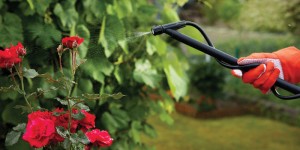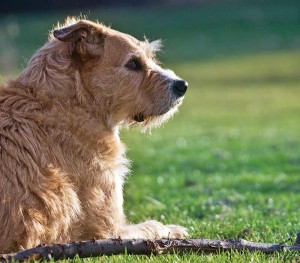When you begin to prepare your garden’s soil and plant flowers and vegetables in the soil, be aware of the hazards that gardens pose for cats and dogs. Also, consider the ways that you can make your backyard pet-friendly throughout the gardening season.
Here are five tips to keep in mind:
Identify poisonous plants
Pets can be naturally curious when it comes to sniffing around the garden, so know which plants are toxic to your pets before you let them loose in your garden.
The Humane Society states that more than 700 plants have been identified as being poisonous to animals. The list includes house plants, ornamental shrubs and ornamental vines as well as trees, cultivated trees, shrubs, vines, garden herbs and garden flowers. There are also a number of wildflowers, weeds, vines, field herbs, wild shrubs and marsh plants that are toxic to animals.
Some of the most common plants toxic to pets include:
- Lilies
- Daffodils
- Philodendrons
- Azaleas
- Sago palm
- Rhubab
- Elderberry
- English ivy
- Holly
- Yew
Be careful with pesticides and fertilizers

The University of Montana Extension reminds gardeners to keep pets away from chemicals and to prevent food and water contamination. Before mixing and spraying pesticides, cover food and water bowls and move them outside of the area that will be treated. Keep animals off of areas that have been treated, too.
Although fertilizers that don’t contain pesticides or herbicides usually don’t harm pets, some contain ammonium nitrate. This chemical is toxic if consumed and will irritate animals’ skin and lungs. If pets walk in areas that have been treated by fertilizers, they may groom their paws and thus ingest the fertilizer. To avoid this, keep pets off of areas that have been fertilized.
Watch for fleas and ticks
Pet owners inevitably have to manage fleas on their cats and dogs. Tall grasses and shrubs typically harbor fleas and ticks.
The National Pesticide Information Center recommends checking pets soon after they’re been in areas that are infested or likely infested with ticks. Also, keep your yard and garden clear of leaf litter and tall grasses, shrubs and bushes. Keep the grass mowed and trimmed to reduce the number of fleas and ticks bothering your pets.
Keep pets out of garden beds
Cats will naturally use garden beds as litter boxes, but you can prevent this behavior, according to Louisiana State University Ag Center. If you’ve turned the soil in your beds, spread a thick layer of mulch on top, then cover the mulch with tarp or plastic until you’re ready to plant.
Louisiana State University Ag Center also recommends installing fences around vegetable gardens to keep dogs out of plants and to deter them from digging holes.
Incorporate raised beds
One way to keep pets out of your plants is by using raised beds. Raised beds can be fenced and framed, so pets will be less-likely to roam through your plants. They’ll also be less-likely to eat plants that are toxic to them if they’re not easily accessible.












